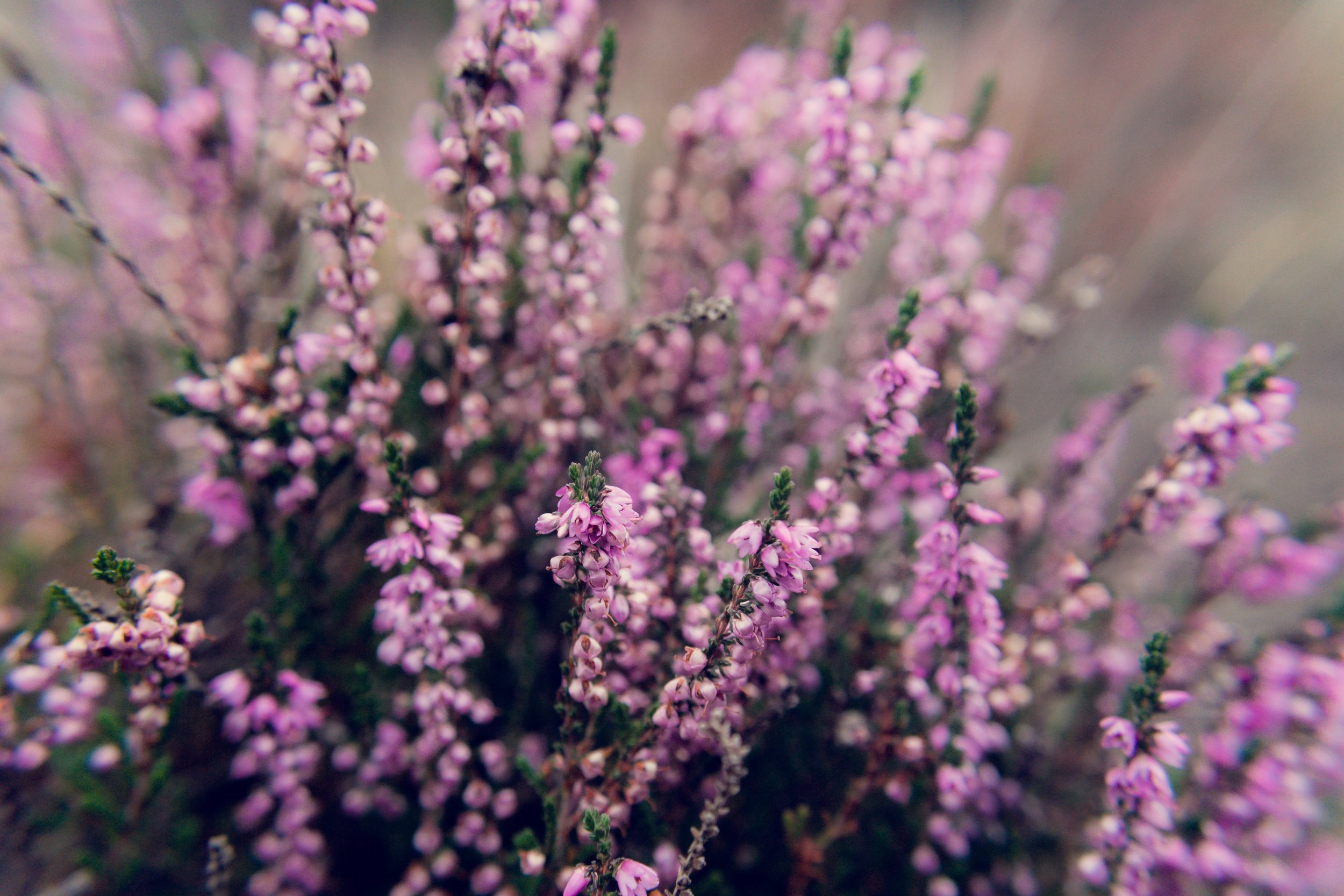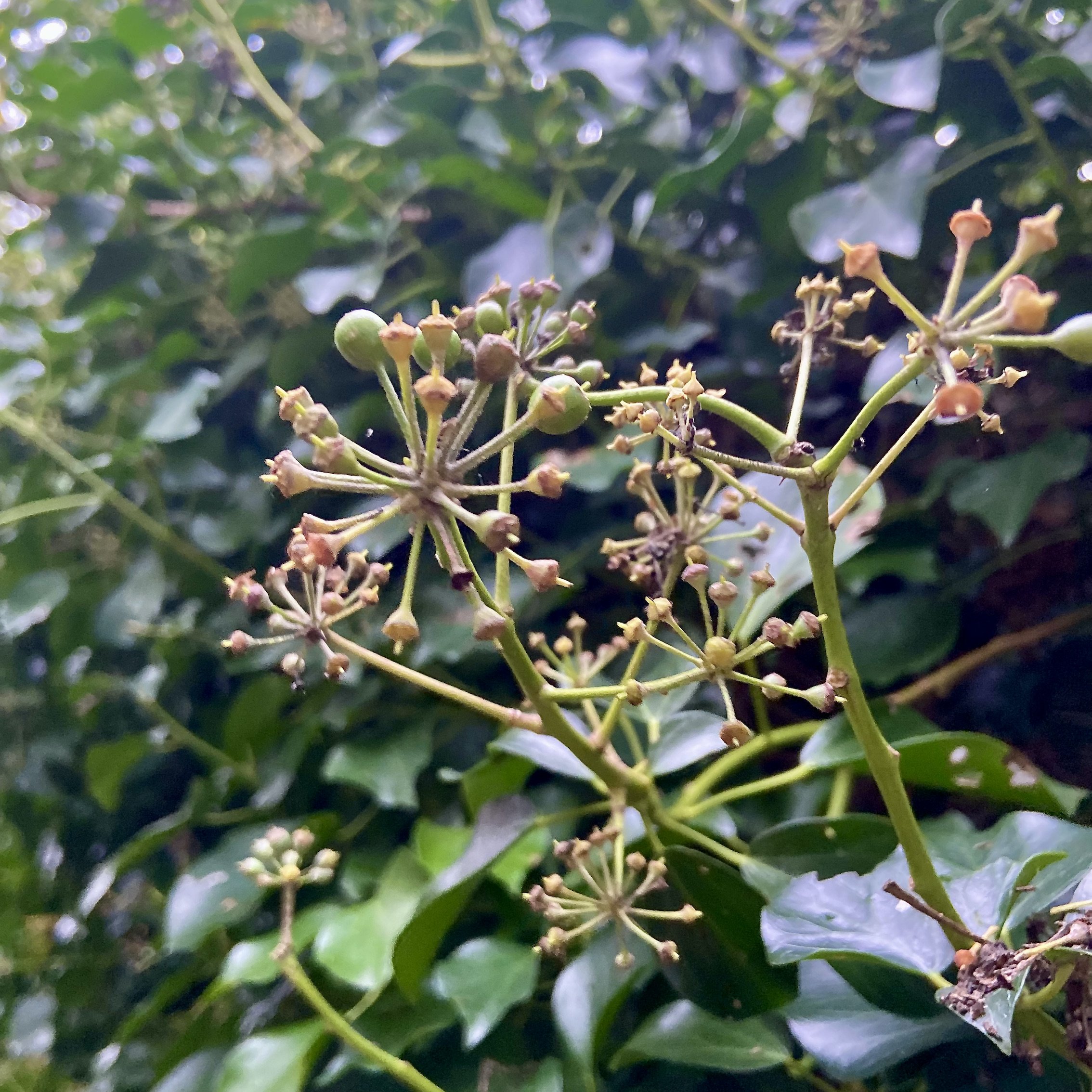The days are drawing in now, and I find myself in wet weather gear more often then not when I leave the house. Winter is on it’s way! The last calendar month of autumn can still hold some tasks in the wildlife garden, before the much quieter winter sets in and minimal disturbance is key.
You may notice some bird species are flocking together and being very vocal. Leaf piles are growing as deciduous trees shed their leaves- a good reminder that everything is cyclical and this time of senescence will ultimately lead to new life.
So what can we do to best prepare our wild visitors for the upcoming hardest months of the year?
Heather is a great choice for Cornish gardens
Planting: As mentioned previously, most of autumn and throughout winter you can plant trees, shrubs and certain perennials. Don’t plant in sodden or frozen ground. Consider plants that will offer pollinators a chance to stock up over winter or early spring, like hellebores (native Helleborus foetidus is a great choice, but is poisonous to humans and pets). Bell heather is another wonderful plant that is well suited to the North Cornish coast and offers nectar to pollinators at a time when flowering plants are scarce.
Dead flower heads provide habitat for invertebrates and food for birds.
Decay: Something that traditional gardening shies away from as it suggests ugliness and death. A wildlife gardener embraces decay and rot as it is most certainly part of nature’s natural cycle and such an important step for soil health and a thriving ecosystem. Leaf piles can be left to break down of their own accord. If you have piles building up where they might be a hazard (like on a slippery patio), you can make leaf mould with them. Leaf mould is a great addition to soil and simply requires you collect fallen leaves in a bag, puncture the bottom and leave it for a couple of years! See more here.
Logs: To add to the decaying leaf matter, a gnarled log is a great addition to a bed or corner of a garden. If you know an arborist, they might have a spare felled branch (or ten!) they can offload. Apart from the additional habitat you are creating, a rotting log will add nutrients to the garden and encourage beneficial microbial growth. You might just get some interesting mushrooms feeding on it.
Ivy: I have a fondness for Ivy (Hedera helix). I think it gets a bad name due to it’s vigorous growth, appearance to strangle trees (which it does not, although it may add to the overall weight and so can be a hazard in windy areas), and what a lot of traditional gardener’s consider ‘ugly’ appearance. It also does not bode well for old houses with its specialised hairs creeping into cracks and causing fissures to widen. However- it is a champion for wildlife. From its dense foliage that houses sparrows, snails and all sorts of invertebrates, to the flowers that are awash in bees, butterflies and hoverflies in early autumn and then the late berries that sustain birds through winter. So hold off on pruning. Understandably, you might want to prune it at some point- wait until the berries are done, and make sure there are no nesting birds where you want to cut back.
Mulch: Nature rarely allows bare earth to occur. If your garden has areas of bare earth, you might want to mulch it. Mulches can help with soil nutrition, provide habitat for invertebrates and keep the soil a more even temperature for new plants. Wood chippings, seaweed (please check permissions before foraging) and well rotted manure are all good options. Think about what could be planted in this patch next year!
Mostly, now is the time to wind down and leave your garden to do its own thing over winter. Of course, keep providing appropriate food, shelter, water and access to all types of wildlife. If you want any more inspiration before Winter hits, take a look at September and October jobs- most are still able to be done now.
Chicory is still abundant and in flower in the fields. Bees love them.
Have a question about what to do in your garden in November? Please leave a comment below!
If you are local to the North Cornish coast and would like a survey and advice on how to make your garden more wildlife friendly, please contact me!





